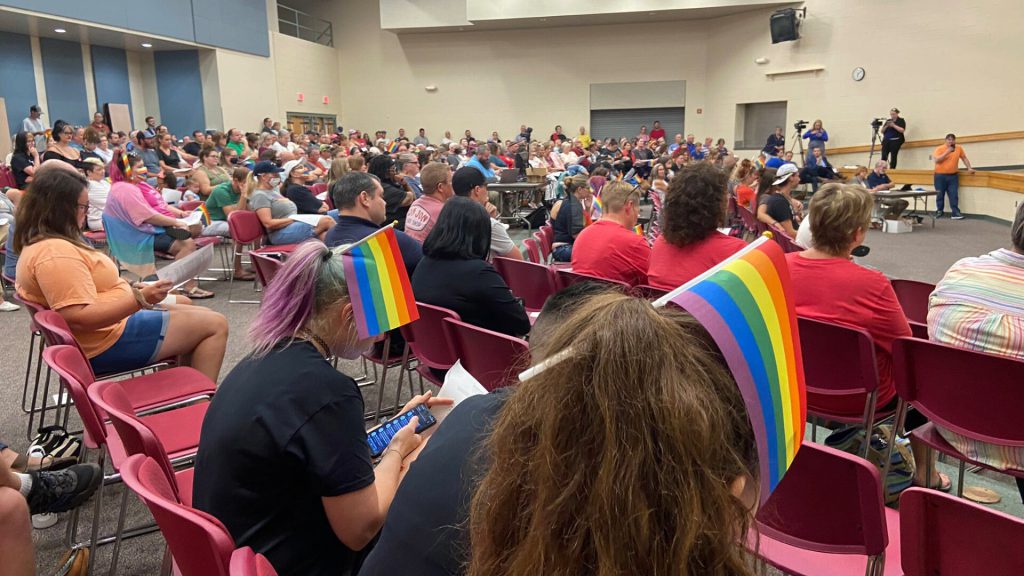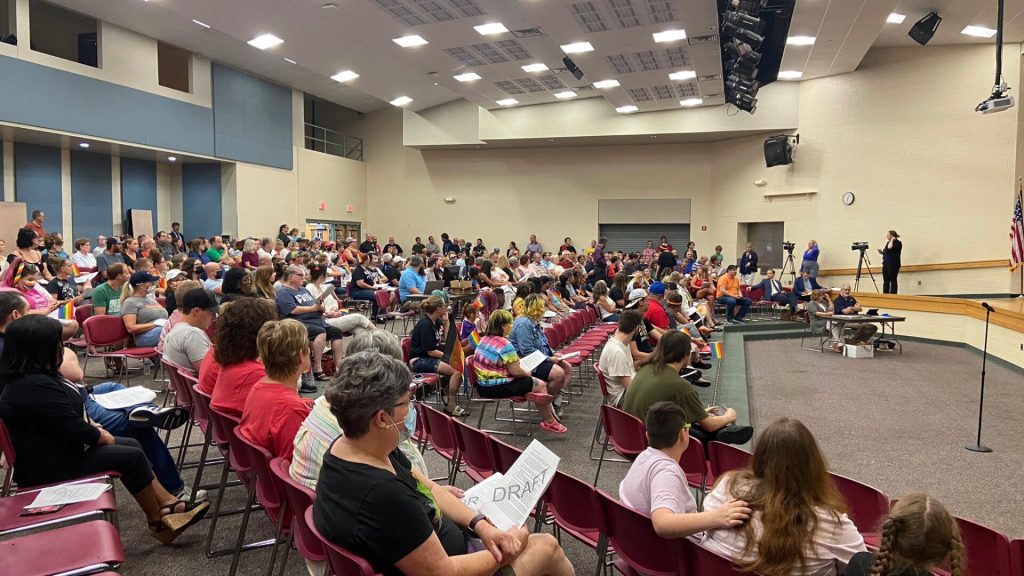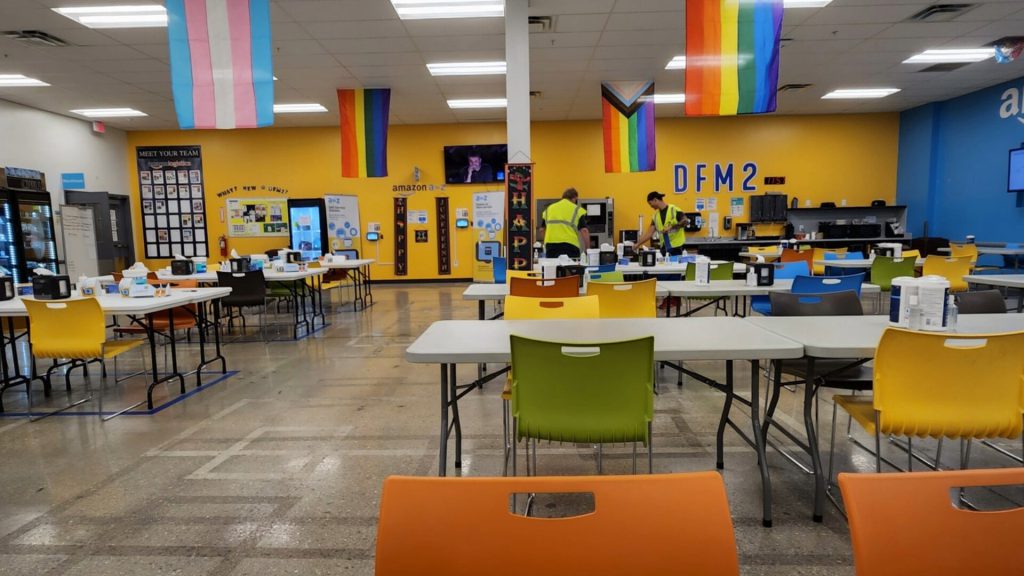The topic of child gender transition has sparked a heated debate, putting schools under the spotlight for not being open with parents about their child’s journey in discovering gender identity and possible transition.
This heated topic has stirred up debates about parental rights, the well-being of transgender and gender-nonconforming students, and the role of schools in dealing with this complex issue.
The Call For Transparency And Parental Involvement
Schools are facing the heat for their approach to managing matters related to child gender transition, especially the issue of a lack of transparency and communication with parents about their child’s gender identity exploration and any possible advances toward gender transition.

This has led to concerns about the scope of parental rights, and the emotional status of the children involved.
Differing Perspectives On Parental Involvement In Child Gender-Transition
As with every controversial issue, there are different perspectives on this debate. Some people believe that parents should play a big role in their child’s decision-making process when it comes to gender identity and any potential transition.

On the other hand, there are those who believe that leaving parents out of these discussions may be vital in order to protect the child’s emotional and physical well-being, especially in cases where the child has fears of rejection or a perceived lack of understanding from their family.
Navigating The Legal And Ethical Maze Of Child Gender-Transition In Schools
The rules and ethics about kids changing genders in schools are tricky. Laws are different in each state, and schools have to follow them while also thinking about what’s best for the kids and what parents should do.

Making things even more complicated are questions about what’s right for the kids, what rights parents should have, and what schools should do. Supporters of kids exploring gender say schools should be welcoming places for everyone. They believe schools should help these kids feel good about themselves and do well in school.
Fostering Supportive Environments For Gender-Diverse Students
They believe that schools play an important role in offering support to transgender and gender-nonconforming students to ensure their emotional well-being and academic success. They also argue that open dialogue and alliance between schools, students, and parents are important in facilitating a supportive and understanding community.

The absence of transparency and communication between schools and parents on the matter of child gender transition has led to calls for well-defined policies.
Striking A Balance: Advocating For Parental Involvement In Child Gender-Transition
Those in support of parental involvement emphasize the need for open and respectful dialogue, and ensuring that parents are not kept in the dark on discussions that pertain to their child’s well-being or any decisions related to gender identity exploration or transition.

This debate over child gender transition underlines the need to create a balance between the rights of parents, the well-being of gender-diverse children, and the responsibilities of schools in navigating these sensitive matters.
Addressing Challenges In Child Gender-Transition In Schools
To achieve this, thoughtful reflection, open communication, and a devotion to upholding the emotional and physical security of all students is necessary while also respecting the rights and roles of parents in their child’s development.

One of the key challenges in addressing the issue of child gender transition in schools is ensuring that the rights and needs of all stakeholders are adequately addressed.
The Role Of Schools As Refuges For Gender-Diverse Youth
Parental involvement is often considered important in how kids grow up and decide things. But what happens when what’s best for a child clashes with what their parents believe about gender?

In some cases, when kids don’t feel safe or supported at home, schools can become a crucial place of refuge. Especially for transgender or gender-nonconforming kids, school might be the only place where they feel truly accepted for who they are.
Balancing Safety And Support
In cases like these, the school might need to pay more attention to keeping the child safe and happy, even if it means not involving their parents as much. But opting to leave their parents out of discussions about their child’s gender identity can cause big problems too.

It might make parents feel left out and distant from their child, which could make things worse at home and make it harder for the child to get the support they need.
The Laws Are Changing
Also, the laws about parents’ rights and kids’ freedom to choose their gender are changing. In some places, there are rules that say transgender and gender-nonconforming kids can decide their gender without needing their parents’ permission.

This makes us think about how much say parents should have versus how much kids should get to decide for themselves.
Practical Steps To Follow
On top of the legal stuff, there are practical problems to tackle to make sure transgender and gender-nonconforming students do alright at school.

This includes things like making sure they can use bathrooms that match their gender and having strong rules against bullying which the updated Title IX goes a long way in achieving. Schools have to deal with a lot of different issues to make sure everyone feels welcome and safe.
School Staff Should Be Trained
It is also of utmost importance that the staff of the school to get training on gender identity and diversity. When teachers understand these issues, they are better equipped to see it to it that all students feel safe and respected, no matter what gender they identify with or how they express it.

Also, it’s important for schools, parents, and community groups to work together to help gender-diverse kids. When everyone teams up, they can share ideas and resources to make sure all students have the help they need to do well.
What’s The Target?
The main aim should be to make schools places where every student feels accepted for who they are, while also considering parents’ rights.

This means understanding the different needs of transgender and gender-nonconforming kids and making sure everyone talks openly and works together to make it happen.
Promoting Inclusive Environments For Gender-Diverse Students
On a closing note, dealing with child gender transitioning in schools is a really complicated issue, involving ethical, legal, and practical elements to it. Finding the right balance between parents’ rights, kids’ freedom, and the well-being of gender-diverse kids needs a lot of talking, teamwork, and a promise to make schools welcoming for everyone.

If schools, parents, and communities team up, they can make sure all students get the help they need to do well.






